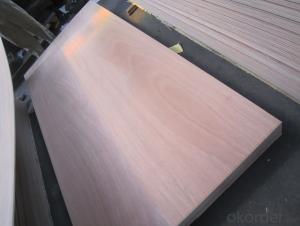When it comes to building built-ins and shelving, the choice of material can make all the difference in the world. And if you’re looking for a strong, reliable, and versatile option, 5/8 plywood is a fantastic choice. But what exactly is 5/8 plywood, and why should you consider it for your next project? Let’s dive in and explore the world of 5/8 plywood and its many benefits.
First things first, let’s talk about what 5/8 plywood actually is. Plywood is a type of engineered wood that’s made from thin layers of wood veneer that are glued together. The ‘5/8’ refers to the thickness of the plywood, which is 5/8 of an inch. This thickness makes it a sturdy and reliable option for a variety of applications, including built-ins and shelving.
One of the biggest benefits of using 5/8 plywood is its strength. Because it’s made from multiple layers of wood veneer, it’s incredibly strong and can handle a lot of weight. This makes it perfect for built-ins and shelving, where you need something that can support heavy items without bending or breaking. Plus, the layers of veneer also help to prevent warping and twisting, ensuring that your built-ins and shelves stay straight and sturdy over time.
Another great thing about 5/8 plywood is its versatility. It can be used for a wide range of projects, from furniture and cabinetry to flooring and wall coverings. This means that you can use it in a variety of different ways, depending on your specific needs and preferences. Whether you’re building a bookshelf, a set of cabinets, or a custom piece of furniture, 5/8 plywood is a great option to consider.
But 5/8 plywood isn’t just strong and versatile – it’s also easy to work with. Because it’s made from thin layers of wood veneer, it’s easy to cut and shape, making it a great option for DIY projects. Plus, it can be painted, stained, or finished in a variety of ways, allowing you to customize the look and feel of your built-ins and shelves to match your personal style.
Of course, no material is perfect, and there are a few potential downsides to using 5/8 plywood. One of the biggest is cost – it can be more expensive than other types of plywood or particle board. However, the added strength and durability can make it worth the extra cost in the long run. Additionally, because it’s made from multiple layers of wood veneer, it can be a bit heavier than other options, which may be a consideration if you’re building something that needs to be lightweight.
So, how do you choose the right 5/8 plywood for your project? There are a few key factors to consider. First, consider the grade of the plywood. Plywood is graded based on the quality of the wood veneer and the absence of defects. Higher grades of plywood will have fewer defects and a smoother surface, making them better suited for projects where appearance is important.
Next, consider the type of wood veneer used. Different types of wood veneer can have different appearances and properties, so it’s important to choose one that matches your specific needs and preferences. For example, if you’re building a bookshelf, you might want to choose a plywood with a veneer that has a nice grain pattern to add visual interest.
Finally, consider the adhesive used to glue the layers of veneer together. Some plywood uses urea formaldehyde, while others use a phenol formaldehyde adhesive. Urea formaldehyde is less expensive, but it can emit more formaldehyde gas, which can be a concern for indoor air quality. Phenol formaldehyde adhesives are more expensive, but they emit less formaldehyde gas, making them a better choice for indoor projects.
In conclusion, 5/8 plywood is a strong, versatile, and reliable material for built-ins and shelving. Its strength and durability make it a great option for projects that need to support heavy loads, and its versatility allows it to be used in a variety of different ways. While there are a few potential downsides to consider, such as cost and weight, the benefits of using 5/8 plywood often outweigh the drawbacks. So, the next time you’re planning a built-in or shelving project, consider giving 5/8 plywood a try – you might just be surprised at how well it works for your needs.

